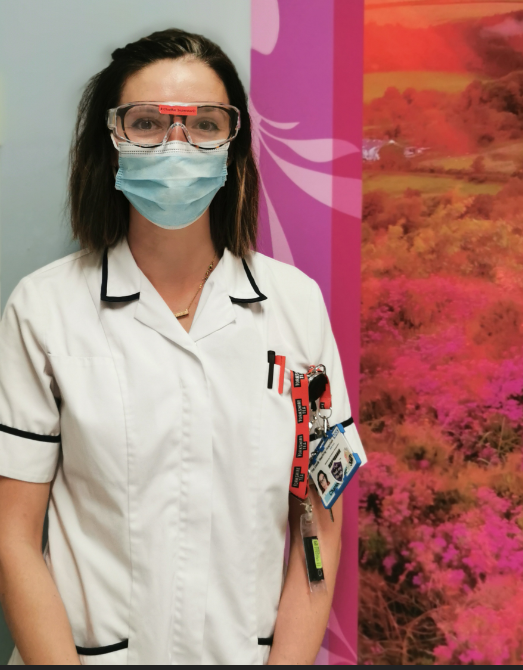Who am I? Charlotte Martin
What do I do? Therapeutic Radiographer
Where do I work? St James’ Hospital, Leeds
Which university did I go to? Sheffield Hallam University


Charlotte Martin
Who am I? Charlotte Martin
What do I do? Therapeutic Radiographer
Where do I work? St James’ Hospital, Leeds
Which university did I go to? Sheffield Hallam University
I took biology, chemistry, statistics, psychology and sociology but ultimately I didn’t do well at A-level and I was incredibly fortunate to receive an unconditional offer for my undergraduate degree.
I initially completed an undergraduate degree in Neuroscience before then finding Therapeutic Radiography and completing a PgDip in Radiotherapy and Oncology in practice.
I had always wanted a career in healthcare which would be quite scientific as I love science; when my mum was diagnosed with breast cancer I’d already been interested in radiography but had only considered diagnostic, not therapeutic. My mum mentioned this to one of the radiographers treating her, who then went to get a course brochure and contact details for me to arrange a visit in the department.
Before coming to do my visit within the department I was adamant therapeutic radiography was not for me; I had the (very) common misconception that the career would be really depressing, sombre and quite boring to the point I actually tried cancelling the visit twice! From the second I first walked into the linac (treatment machine) with the therapeutic radiographers I knew this was the career for me; the job is very scientific in nature but the staff are amazingly caring and go out of their way to help patients beyond their cancer diagnosis.
Behind every patient is a big MDT of other staff and, within my hospital, these staff are all really well represented within the department which ensures that we all know exactly who to contact when a patient raises an issue. The range of specialisms within health care is so vast that I truly believe there is something for everyone from radiographers (therapeutic and diagnostic), occupational therapists, dieticians, speech and language therapists, physiotherapists and paramedics to name just a few of them!
If I can put a smile on a person’s face when they are facing one of their darkest moments then that is something I consider an achievement and I pride myself on being able to do this daily!
I’ve had a few of these moments at different times during my career, from when I first understood the physics behind how a linac works, to the first time I set up a patient unassisted and, more recently, running a linac as the senior in charge for the day. I recently helped develop and implement the department’s treatment protocols for treating patients with suspected or confirmed covid – being able to see these procedures in action and ensure that this patient group continue to get the best care possible, while still keeping all the other patients and staff within the department safe, makes me incredibly proud because this is all possible due to the amazing team I get to work with daily!
No two days within the job are the same and are dependent upon which area of the department I’m working in; currently I’m based on a linac where we treat approximately 40 patients per day with a range of different diagnoses. These can be a paediatric patient who requires general anaesthetic daily for their treatment to a 99 year old patient who is claustrophobic and needs to wear a mask for treatment. Prior to delivering any treatment we complete QA on each treatment machine to make sure every aspects of the machine is working correctly. We contact each patient prior to their first day of treatment to explain what to expect from treatment both within the room itself but also the side effects – this conversation is so important as it’s one of the first times we will speak to the patient and helps us to immediately build a relationship with them and help to put them at ease, answering any questions they might have. When patients attend for treatment we set them up on our treatment couch according to setup instructions which are specific to their treatment plan, some patients then require imaging either in the form of an x-ray image or a simplified CT scan which we then review to confirm their positioning is correct while assessing for any changes. The treatment itself is very quick and painless for the patient and, often, they are unaware the treatment has even happened!
Patient treatment accounts for roughly 50% of our job; the other 50% is made up of treatment plan preparation whereby we crosscheck and verify patient treatment plans, reviewing patient treatment images, liaising with clinicians and the wider MDT regarding any issues we’ve identified to list just a few other aspects.
I spent 2 years training split between academic time at Sheffield Hallam University and clinical time at St James’ Hospital Leeds where I got to develop my clinical skills alongside my understanding of the role of therapeutic radiographer within the patient pathway. After qualification I worked as a band 5 therapeutic radiographer and rotated through Gamma Knife (one of many specialisms within therapeutic radiography) before being promoted to a band 6 senior therapeutic radiographer just under 2 years later. The role of therapeutic radiographer can be incredibly challenging both physically (be prepared to walk 10,000 steps a day at work!) and mentally but it’s also amazingly rewarding one that I absolutely would not change for the world and I am incredibly proud of the work me and my colleagues do daily!